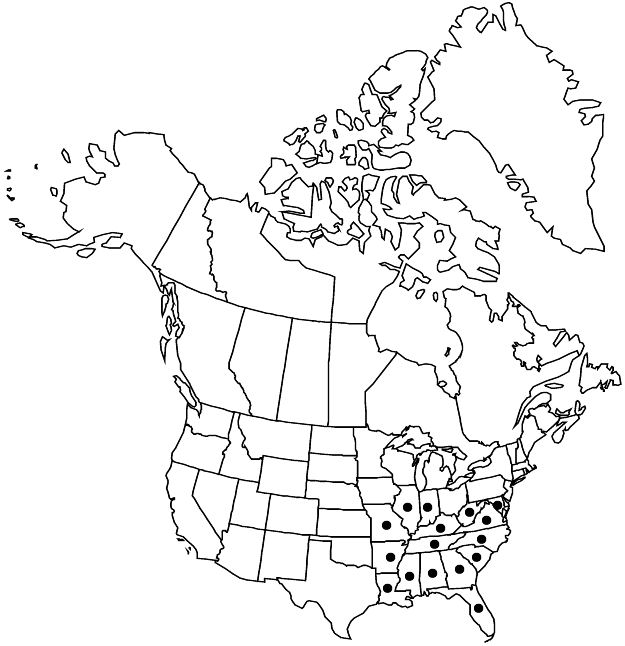Crataegus viridis var. viridis
Stems: trunk bark light gray, ± exfoliating; 1-year old twigs gray-brown. Leaves: blade broadly lanceolate to narrowly rhombic, 4–7 cm, thin, base usually broadly cuneate, lobes 2 or 3 per side, distinct, sinuses shallow to moderately deep, max LII 15–40%, lobe apex acute to subacute, margins crenate-serrate, teeth 1 mm, venation craspedodromous, veins 4 or 5 per side, apex acute, surfaces glabrous young except abaxially with tufts of hair in vein axils, glabrescent. Inflorescences: branches glabrous. Flowers: hypanthium glabrous.
Phenology: Flowering Apr–May; fruiting Sep–Nov.
Habitat: Moist, fertile, alluvial woodlands, agricultural derivatives of these
Elevation: 10–200 m
Distribution

Ala., Ark., Fla., Ga., Ill., Ind., Ky., La., Md., Miss., Mo., N.C., S.C., Tenn., Va., W.Va.
Discussion
Variety viridis is widespread and sympatric with the other varieties except var. glabriuscula, with which it shares a diffuse boundary. Reports from Kansas, Oklahoma, and Texas need confirmation. Variety viridis grades into var. glabriuscula, var. lanceolata, var. ovata, and Crataegus nitida.
Selected References
None.
